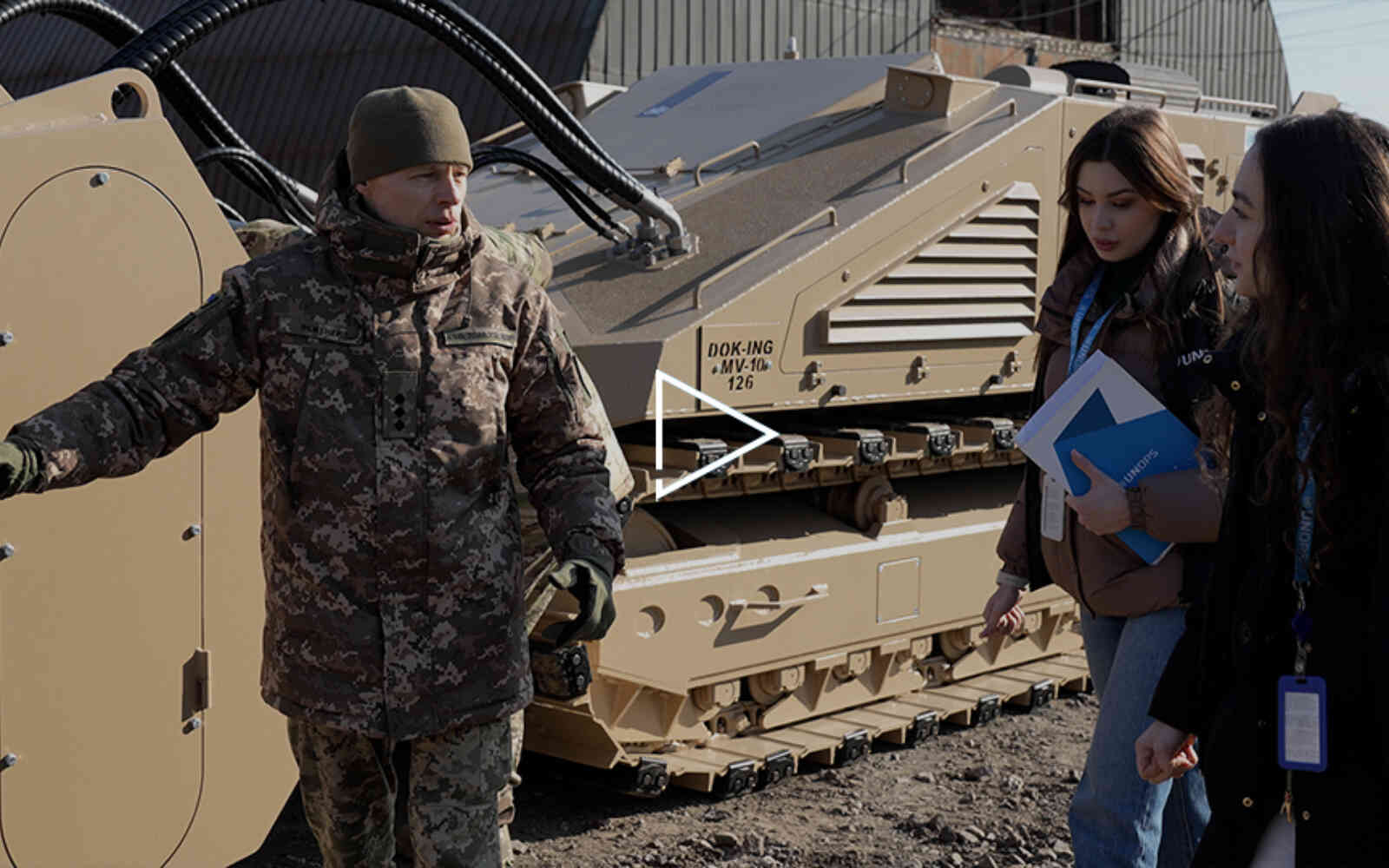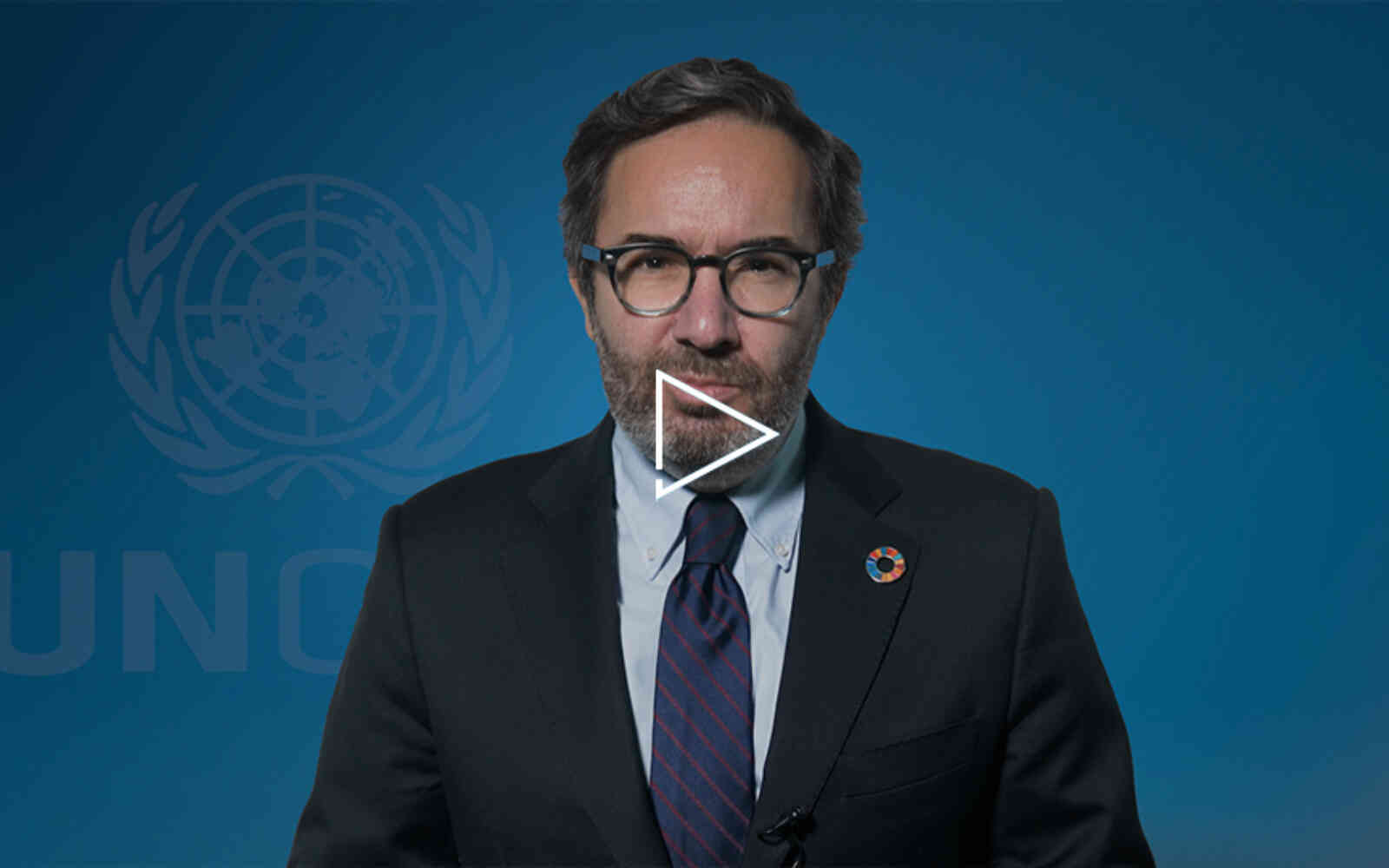The United Nations Office for Project Services (UNOPS)

Can artificial intelligence improve humanitarian responses?
Refugees and other affected populations could help guide humanitarian aid through chatbots. Here’s how.
Iraq is home to the fourth* largest population of internally displaced persons in the world. At the height of the Iraq conflict, more than 3.4 million people were forced to flee their homes.
In that context, the Iraq Internally Displaced Persons (IDP) Information Centre was set up, to offer much-needed information, and create an opportunity for affected populations to flag up issues and point out service gaps, so that those of us working in the humanitarian community can ensure a more coordinated response.
The model in Iraq has been lauded as a key mechanism in improving the overall humanitarian response to people affected by protracted conflict and crises. But there’s always room for increasing the efficiency and effectiveness of our work.
That’s why we’ve been looking into evolving the model used in Iraq for the recently launched Awaaz Afghanistan, an information, complaints and feedback centre. We asked ourselves: How can we embrace the growing use of social media and artificial intelligence platforms to ensure even more people around the country can get in touch in times of need?
To reach different segments of affected populations, we need to utilize tools that will open up communication channels and promote the exchange of information.
In a world of advancing technologies and increasingly complex crises, combining new forms of communication with old ones offers a solution.
A chatbot is a computer program designed to simulate conversation with human users, especially over the Internet.
Tools such as WhatsApp, social media messaging, automated voice messaging and chatbots, for instance, could help us deliver services smarter, better and faster while offering alternative ways for people to contact the centre.
From providing automated interactions for people who can’t read or write, to reaching tech-savvy youth, using these different tools allow more people to contact us at any given time – ensuring that more people’s request for assistance are received and their needs met.
With their ability to handle multiple queries at once, chatbots could mean increased capacity to provide essential information, by providing automated responses to some of the most commonly reported issues. This would free up phone lines for callers who might require a more nuanced response from a person – such as callers flagging serious protection concerns – ensuring they get through to an operator during their time of need.
But using chatbots and social media messaging as part of Awaaz Afghanistan’s service isn’t just about quantity – increasing the number of calls we could answer. It’s also about how we could help to improve the quality of the services that humanitarian organizations operating in the country can provide.
In addition to vital information, these kinds of innovative communications tools could also allow us to process a larger amount of feedback from diverse segments of the population. This would not only help humanitarian organizations better understand the specific needs of different communities, but would also help to more quickly and accurately pinpoint trends in needs as they arise, identify assistance gaps and allow for more refined and tailored responses.
Like the Iraq IDP Information Centre, Awaaz Afghanistan provides crucial, often life-saving information. By exploring new technologies that could complement and enhance traditional forms of communication, we have the potential to make an even bigger difference to the lives of people across the country.
Artificial intelligence, chatbots and social media messaging tools present enormous opportunities for enhancing the impact of humanitarian work. And in the near future, these will likely become an indispensable part of it.
- *Fourth largest population as of October 2018
Charlotte Lancaster
Charlotte Lancaster is the former UNOPS Project Manager for Awaaz Afghanistan, a country-wide inter-agency information centre based in Kabul that connects those who need assistance with those who can assist. She is the former UNOPS Project Manager for the Iraq Internally Displaced Persons Information Centre.













